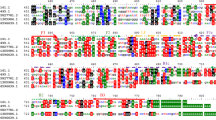Abstract
Traceability of olive oils is relevant not only in assessing their origin, but also in protecting against frauds. Here, we present an improvement of the assay previously developed for the genotyping of forty-nine frequently grown Mediterranean olive cultivars by ligation detection reaction (LDR)/universal array (UA), refining the entire procedure in order to address DNA extracted from monovarietal olive oils. Firstly, a simple and robust protocol to extract amplifiable DNA from olive oil was developed. Then, the SNP-containing DNA sequences were simultaneous amplified by multiplex PCR and used on a LDR-UA platform, which gave precise and accurate genotype results. Thirteen out of the seventeen investigated SNPs were amplifiable in multiplex PCR, and were sufficient to unequivocally discriminate the forty-nine cultivars. The availability of this semi-automated SNP genotyping assay should help food testing laboratories to verify the origin and authenticity of monovarietal extra-virgin olive oils.






Similar content being viewed by others
References
International Olive Council, Trade standard applying to olive oils and olive-pomace oils (monograph on the Internet), Madrid: International Olive Council (2006) (cited 26 June 2006). http://www.internationaloliveoil.org/downloads/NORMAEN1.pdf
Woolfe M, Primrose S (2004) Trends Biotechnol 22(5):222–226
Raspor P (2005) Acta Biochim Pol 52(3):659–664
Cercaci L, Rodriguez-Estrada MT, Lercker G (2003) J Chromatogr A 24:211–220
Christopoulou E, Lazakari M, Komaitis M, Kaselimis K (2004) Food Chem 84:463–474
Busconi M, Foroni C, Corradi M, Bongiorni C, Cattapan F, Fogher C (2003) Food Chem 83:127–134
Breton C, Calux D, Metton I, Skorski G, Berville A (2004) J Agric Food Chem 52:531–537
Budker VG, Slattum PM, Monahan SD, Wolff JA (2002) Biophys J 82:1570–1579
Montemurro C, Pasqualone A, Simeone R, Sabetta W, Blanco A (2007) Eur Food res Technol DOI 10.1007/s00217-007-0675-z
Pasqualone A, Montemurro C, Summo C, Sabetta W, Caponio F, Blanco A (2007) J Agric Food Chem 55:3857–3862
Testolin R, Lain O (2005) J Food Sci 70:108–112
Muzzalupo I, Pellegrino M, Perri E (2007) Eur Food Res Technol 224(4):469–475
Doveri S, O’Sullivan DM, Lee D (2006) J Agric Food Chem 54:9221–9226
De la Torre F, Bautista R, Canovas FM, Claros G (2004) Food Agric Environ 2:84–89
Pasqualone C, Montemurro C, Caponio F, Blanco A (2004) J Agric Food Chem 52:1068–1071
Pafundo S, Agrimonti C, Marmiroli N (2005) J Agric Food Chem 53:6995–7002
Consolandi C, Palmieri L, Doveri S, Maestri E, Marmiroli N, Reale S, Lee D, Baldoni L, Tosti N, Severgnini M, De Bellis G, Castiglioni B (2007) J Biotechnol 129(3):565–574
Brookes AJ (1999) Gene 234(2):177–186
Angiolillo A, Mencuccini M, Baldoni L (1999) Theor Appl Genet 98:411–421
Saeed AI, Sharov V, White J, Li J, Liang W, Bhagabati N, Braisted N, Klapa N, Currier T, Thiagarajan M, Sturn A, Snuffin M, Rezantsev A, Popov D, Ryltsov A, Kostukovich E, Borisovsky I, Liu Z, Vinsavich A, Trush V, Quackenbush J (2003) Biotechniques 34(2):374–378
Acknowledgments
This study has been carried out as part of the “Traceability of origin and authenticity of olive oil by combined genomic and metabolomic approaches” project (OLIV-TRACK, www.dsa.unipr.it/foodhealth/oliv-track/index.html) funded by the European Union (contract QLK1-CT-2002-02386, Quality of Life and Management of Living Resources). The partners of the OLIV-TRACK project are acknowledged for sharing their samples and expertise. We thank MIUR for partial financial support (FIRB “MICRAM”, RBNE01ZB7A and FIRB2003, RBLA03ER38_004). Part of this work was supported by the EU-FPV Marie Curie Training Site scheme. Our thanks to NIAB (Cambridge, UK) for their hospitality and scientific support, to Maria Vurchio for help with administrative issues and to Giada Caredda for the support in the experimental phase.
Author information
Authors and Affiliations
Corresponding author
Additional information
C. Consolandi and L. Palmieri equally contributed to this research paper.
Rights and permissions
About this article
Cite this article
Consolandi, C., Palmieri, L., Severgnini, M. et al. A procedure for olive oil traceability and authenticity: DNA extraction, multiplex PCR and LDR–universal array analysis. Eur Food Res Technol 227, 1429–1438 (2008). https://doi.org/10.1007/s00217-008-0863-5
Received:
Revised:
Accepted:
Published:
Issue Date:
DOI: https://doi.org/10.1007/s00217-008-0863-5




